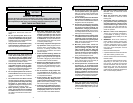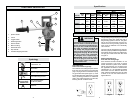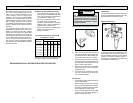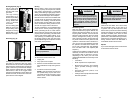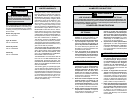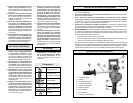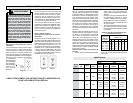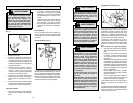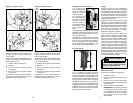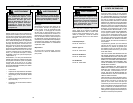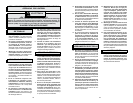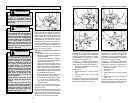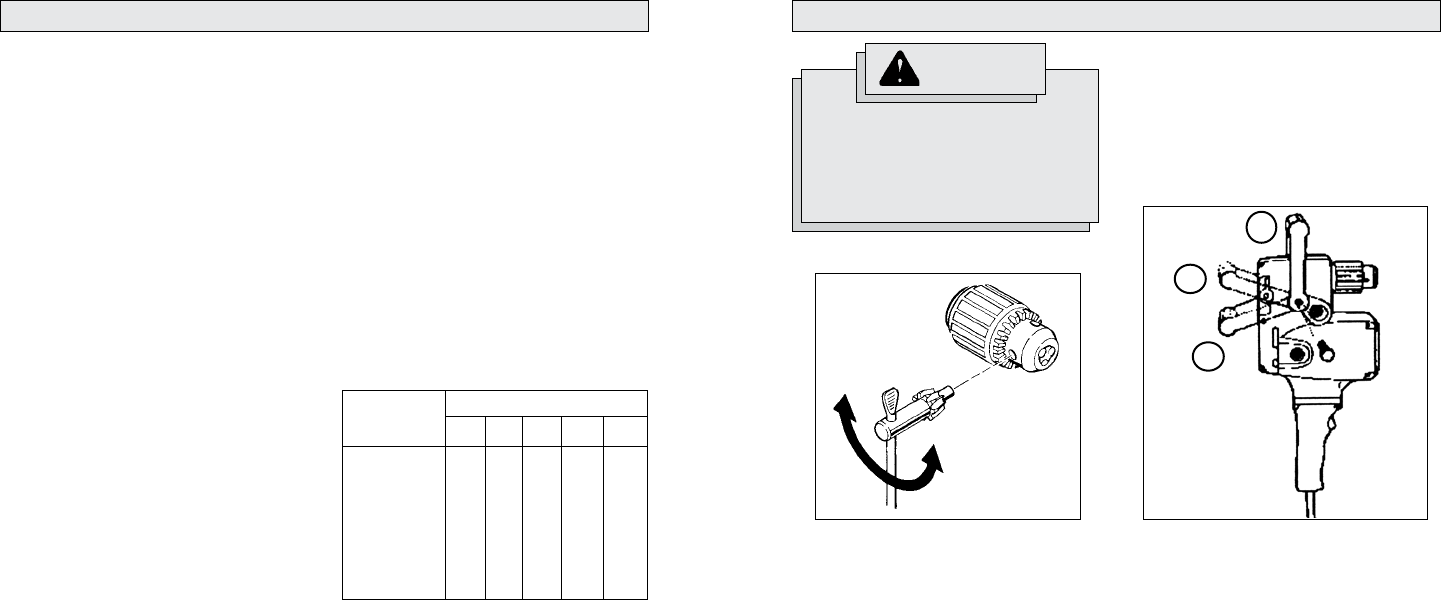
6
7
Grounded tools require a three wire exten-
sion cord. Double insulated tools can use
either a two or three wire extension cord.
As the distance from the supply outlet
increases, you must use a heavier gauge
extension cord. Using extension cords with
inadequately sized wire causes a serious
drop in voltage, resulting in loss of power
and possible tool damage. Refer to the table
shown to determine the required minimum
wire size.
The smaller the gauge number of the wire,
the greater the capacity of the cord. For ex-
ample, a 14 gauge cord can carry a higher
current than a 16 gauge cord. When using
more than one extension cord to make up
the total length, be sure each cord contains
at least the minimum wire size required. If
you are using one extension cord for more
than one tool, add the nameplate amperes
and use the sum to determine the required
minimum wire size.
Guidelines for Using Extension Cords
• If you are using an extension cord out-
doors, be sure it is marked with the sufx
“W-A” (“W” in Canada) to indicate that it
is acceptable for outdoor use.
• Be sure your extension cord is prop-
erly wired and in good electrical
condition. Always replace a damaged
extension cord or have it repaired by a
qualied person before using it.
• Protect your extension cords from sharp
objects, excessive heat and
damp or wet areas.
READ AND SAVE ALL INSTRUCTIONS FOR FUTURE USE.
Recommended Minimum Wire Gauge
for Extension Cords*
Extension Cord Length
* Based on limiting the line voltage drop to
ve volts at 150% of the rated amperes.
Nameplate
Amperes
0 - 2.0
2.1 - 3.4
3.5 - 5.0
5.1 - 7.0
7.1 - 12.0
12.1 - 16.0
16.1 - 20.0
25'
18
18
18
18
16
14
12
75'
18
18
16
14
12
10
100'
18
16
14
12
10
150'
16
14
12
12
50'
18
18
18
16
14
12
10
EXTENSION CORDS
WARNING
TOOL ASSEMBLY
To reduce the risk of injury,
always unplug tool before attaching
or removing accessories or making
adjustments. Use only specically
recommended accessories. Others
may be hazardous.
Pipe Handle
The pipe handle may be used on either side
of the tool. Thread pipe handle into one of the
threaded holes in the motor housing.
Spade Handle (Fig. 2)
A
B
Installing Bits into Keyed Chucks (Fig.1)
1. Unplug tool.
2. Open the chuck jaws wide enough to
insert the bit. Be sure the bit shank and
chuck jaws are clean. Dirt particles may
prevent the bit from lining up properly.
3. Insert the bit into the chuck. Center the
bit in the chuck jaws and lift it about 1/16"
off of the bottom. Then, tighten the chuck
jaws by hand to align the bit.
4. Place the chuck key in each of the three
holes in the chuck, turning it clockwise.
Tighten securely.
5. To remove the bit, insert the chuck key
into one of the holes in the chuck and
turn it counterclockwise.
Bit Selection
• Use sharp bits. Sharp bits are less likely
to bind when drilling.
• Use the proper bit for the job. There are
many types of bits designed for specic
purposes. Check the information on the
bit's packaging for proper usage.
• Do not use bits larger than the rated
capacity of the drill. Gear damage or
motor overload may result.
The spade handle can be attached to the tool
in three positions (Fig. 2). Remove the hex
head screws which secure the handle. Re-
move the handle and move it to the desired
position. To mount the handle in position C,
it is necessary to reverse the mounting holes
by turning the handle around.
C
Fig. 2
Fig. 1




